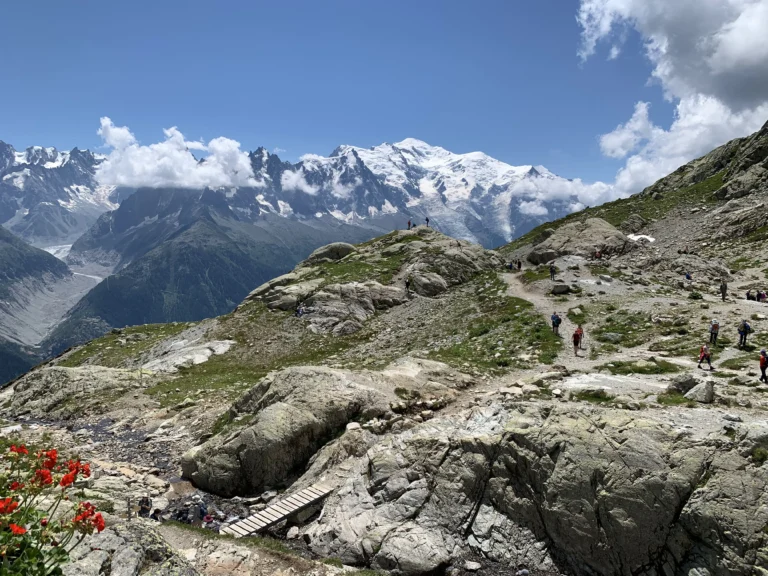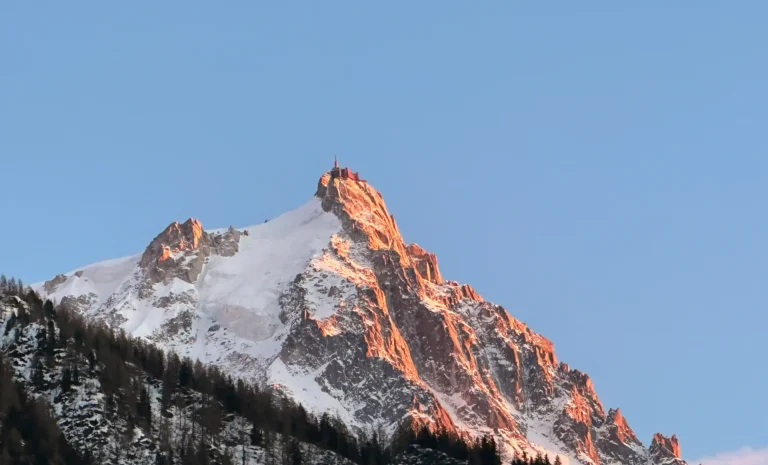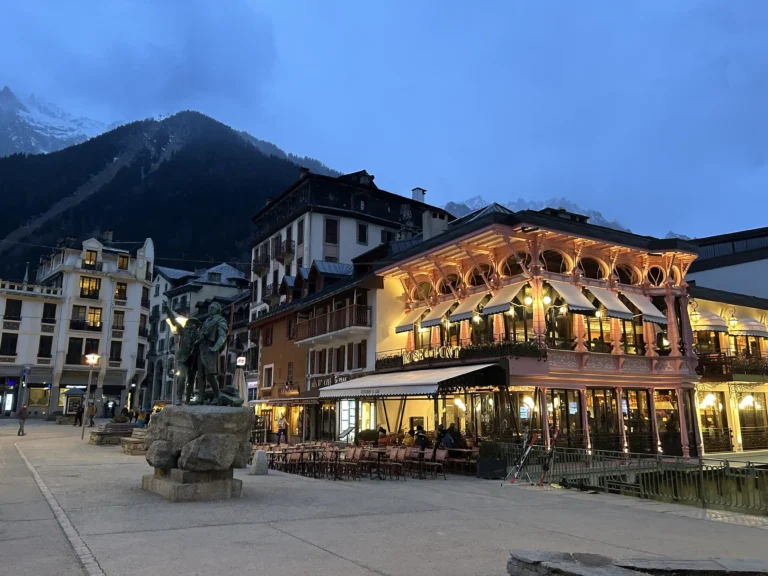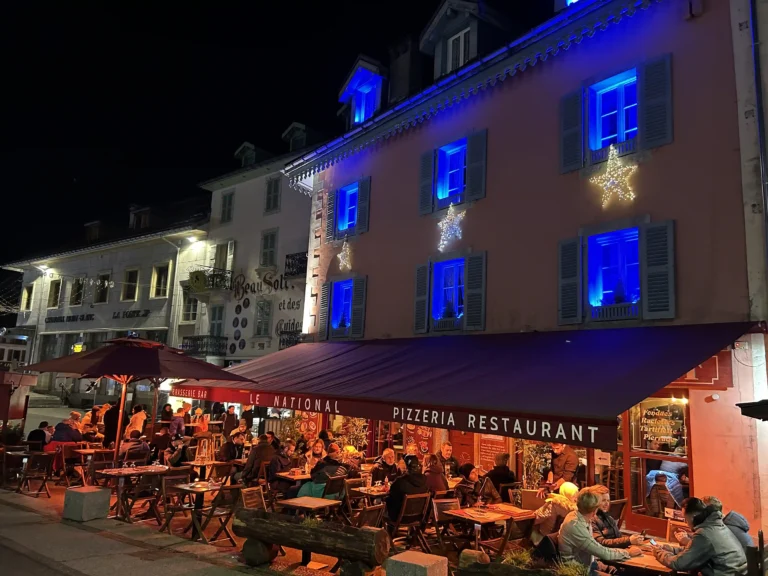The oldest ski area in France, Chamonix-Mont-Blanc (or just Chamonix), is situated at the base of Mont Blanc, the highest peak in Europe, not far from the borders of France, Switzerland, and Italy.
Chamonix was the host of the first-ever Winter Olympic Games in 1924.
Visiting Chamonix in the summer
Contrary to popular belief, Chamonix is considerably more than just a ski resort. In the summer, there is something for everyone in Chamonix, depending on your fitness level. Most of the ski lifts are open in the summer, whisking you up the mountain to witness some of the most breathtaking vistas in the Alps.
Getting to Chamonix
Traveling by bus or car from Geneva International Airport to Chamonix takes a little over an hour.
What to anticipate in Chamonix during the summer
- Days are warm. Evenings are cool.
- August sees more visitors, but not so many that it has an effect on your enjoyment.
- Several outdoor eating options.
How many days do you need in Chamonix?
You could see all the major sights in three to four days, but Chamonix is so large that you could easily stay there for two weeks and still have plenty to do, especially if you want to visit the nearby towns on a few day excursions from Chamonix.
What to do in Chamonix in the summer
1. Aiguille du Midi
You may easily stroll to the Aiguille du Midi cable car from the town’s center. A two-stage cable car can transport you from the town center to 3842 meters in about 20 minutes, where you can take in breathtaking views of the French, Italian, and Swiss Alps.
In the summer, the Aiguille du Midi cable car is one of Chamonix’s most visited attractions, and at busy times, there may be long lines to board the cable cars. Make sure to reserve your time slot ahead of time and arrive early.
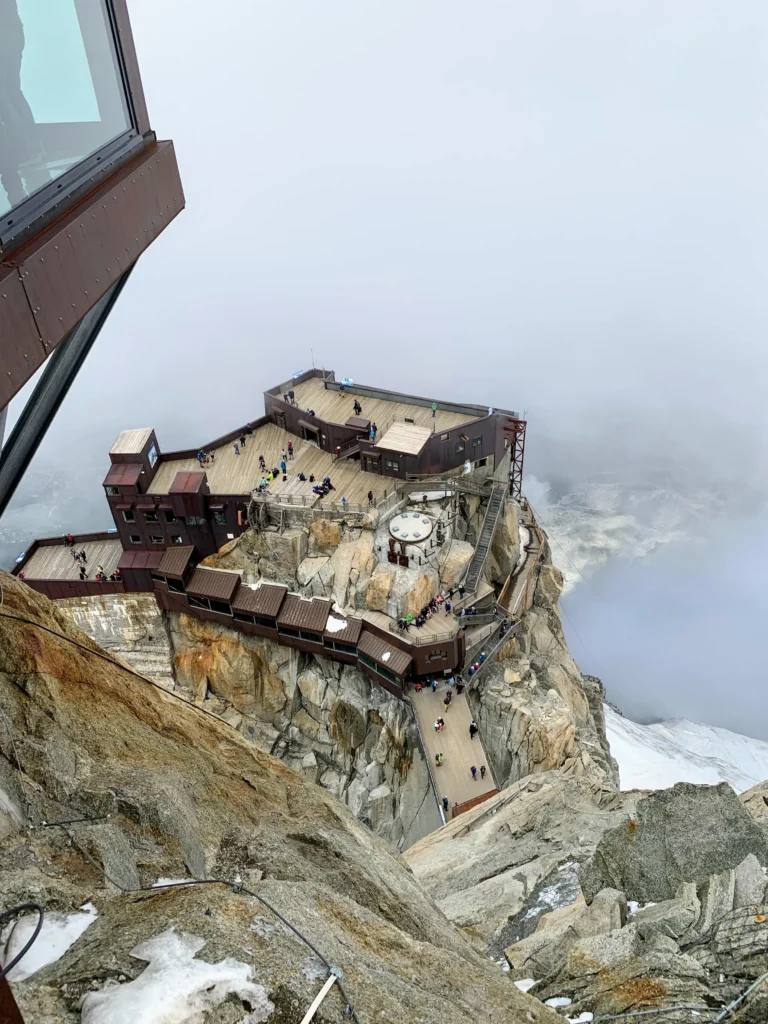
You could feel a bit dizzy or perhaps out of breath as you go around the observation platforms admiring the scenery. Due to the altitude, you’ll start to comprehend how the climbers feel as they make their way up to the peak of Mont Blanc, which is over 1000 meters above you. You’ll adjust to it in no time, so don’t worry.
Because it is close to zero there, wear warm clothing. Even at the peak of summer, it may get extremely chilly at 3842 meters. Bring sunglasses and warm clothing.
The majority of July and August are the busiest months, so try to arrive before 9 a.m. to avoid the lines or visit in the late afternoon.
From Aiguille du Midi, it is also possible to cross over to the Italian side with the Panoramic Mont Blanc cable car.
2. Step Into the Void at Aiguille du Midi
Step Into The Void, a 2.5m glass cage that stands out over a 1,000-meter cliff, is a great place to test your nerves. If you’re brave enough, you may access this via the summit elevator at the very top of the Midi for some absolutely spectacular vistas.
3. Ride the Montenvers train to Mer de Glace Glacier
A journey to Chamonix is not complete without riding the recognizable red train from Chamonix to Montenvers. You may travel from Chamonix’s town center to the base of the Mer de Glace, France’s longest glacier, on the renowned red Montenvers cogwheel train. It is the third-largest glacier in the Alps and stretches an incredible 7 kilometers down the Mont Blanc Massif’s northern slopes. For a closer look at this magnificent glacier, enter the ice cave.
4. Explore Mer de Glace
With a length of 7 km and a depth of more than 200 meters, the Mer de Glace, also known as the Sea of Ice, is the second-biggest glacier in the Alps and France’s largest glacier. It appears to have been massive enough to be seen from the Chamonix Valley. Significant shrinking has made it necessary for us to go toward the Mont Blanc range in order to observe this incredible work of nature. When you go to the observation point, you discover that the glacier moves more than 100m annually. This seems very little until you understand that it moves roughly 1cm each hour!
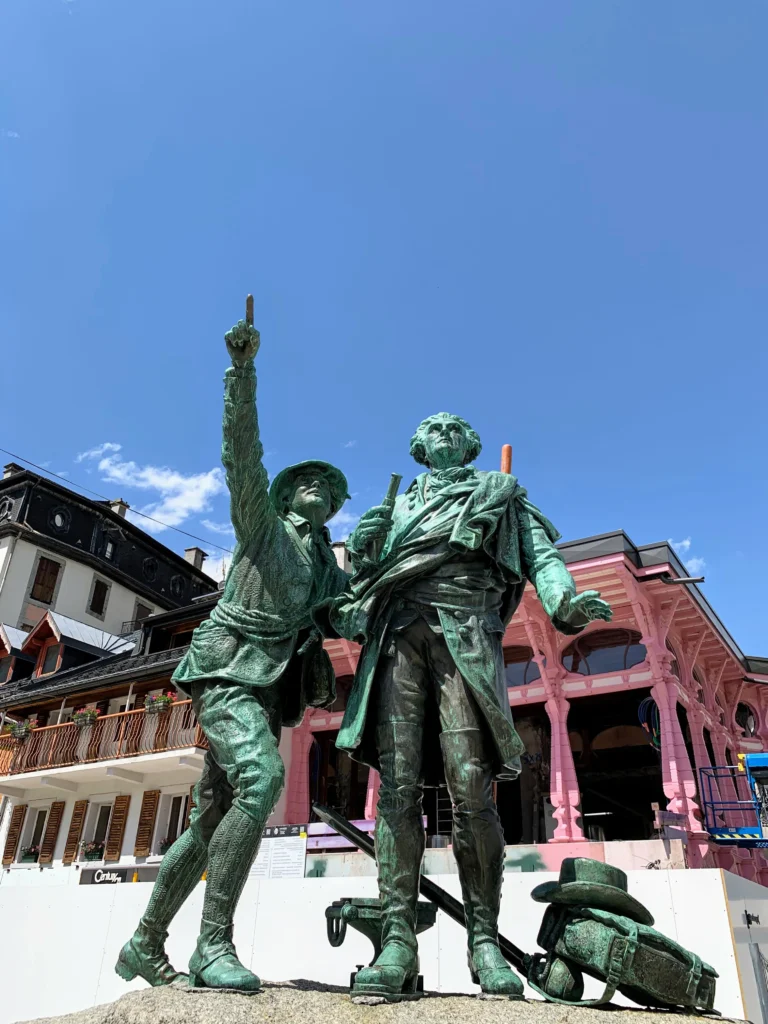
5. Hike to Lac Blanc
The track is simple to follow, and the views are fantastic. It can be comfortably completed in a half-day and provides breathtaking views the entire way. It’s unquestionably among the loveliest walks to take in Chamonix during the summer.
You begin with the Flegere lift and then ascend to the final start of the hike using the Index lift. For varied perspectives, descend to the Flegere mid station once again. Before leaving, inquire about the walk’s conditions in Flegere because the trail may still be dangerously covered in snow even in July.
Even if you don’t have to climb, it is a terrific hike, so come prepared with sturdy walking boots, walking sticks, a jacket, and water. Be prepared since early in the summer; a portion of this is still above the snow line. Somehow, they were able to build a café halfway up the mountain, where customers sat on the veranda wearing sunglasses like they were in a 1960s martini commercial. The lake itself is stunning, as mountains and snow surround it.
Your perseverance will be rewarded when you reach Lac Blanc at the height of 2352 meters with breathtaking views of the Mont Blanc Massif. The mountains on the opposite side of the valley will be mirrored in the lake on a calm day.
It can get sweltering and congested. It’s preferable to get up early. For stunning vistas and more peaceful picnic areas, climb up behind the lake.
6. Ride Le Brévent Cable Car
You may take the cable car to Le Brévent at 2,525 meters from Chamonix after traveling by gondola lift to Plan Praz at 2000 meters. Depending on favourable weather conditions you may see the great view of Mont Blanc.
7. Learn more about the town of Chamonix.
Chamonix’s surrounding breathtaking scenery is without a doubt its main draw, but the town itself is also charming and well worth visiting.
The old district of Chamonix is teeming with chic mountain hotels, artisanal food stores, bakeries, and sidewalk cafés. Visit the Place Balmat plaza, surrounded by charming old buildings, by strolling along the busy pedestrian route Rue du Docteur Paccard.
Don’t forget to observe the River Arve, which flows through Chamonix’s heart. Even a few meters away, you can feel how cold the river is since it is fueled by the glaciers of the Mont Blanc mountain.

Related reading:
